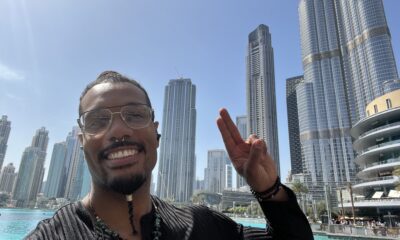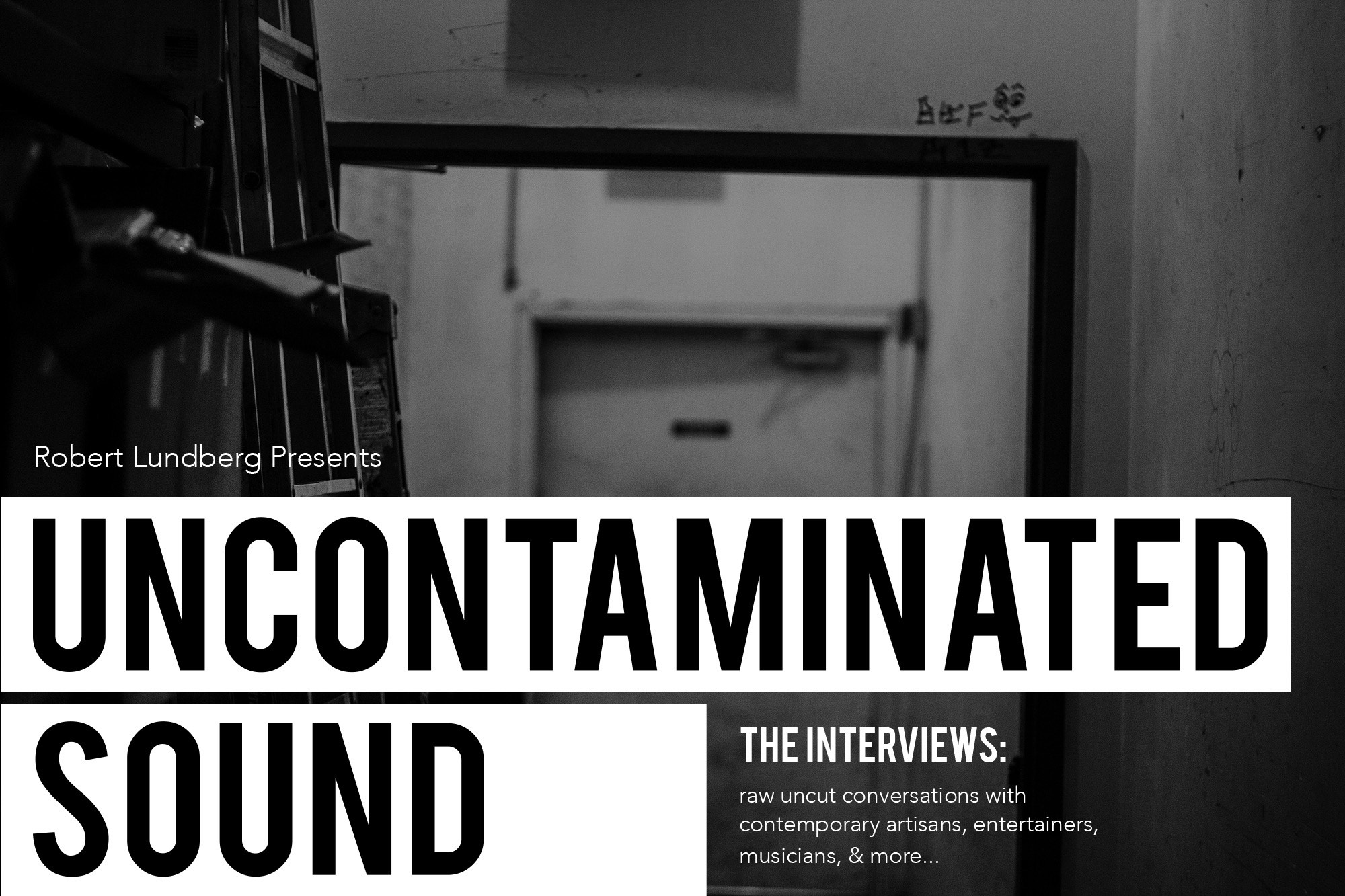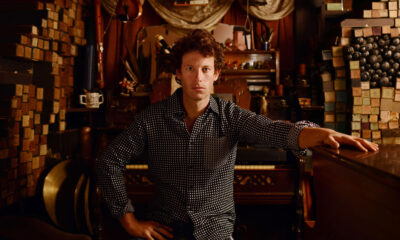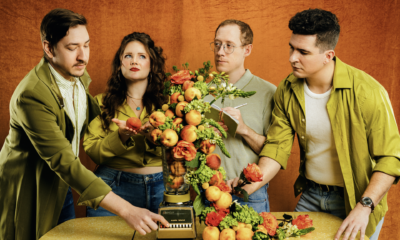Interviews
VARAHA Interview: Frontman FABIO BRIENZA Discusses His Band’s Debut Full-Length ‘A Passage for Lost Years’ and then Some!
Guitarist/vocalist/composer Fabio Brienza of atmospheric metal band Varaha spoke to us with the same expansive depth as he writes his music, elaborating on the band’s new record A Passage For Lost Years and working with Prosthetic Records.
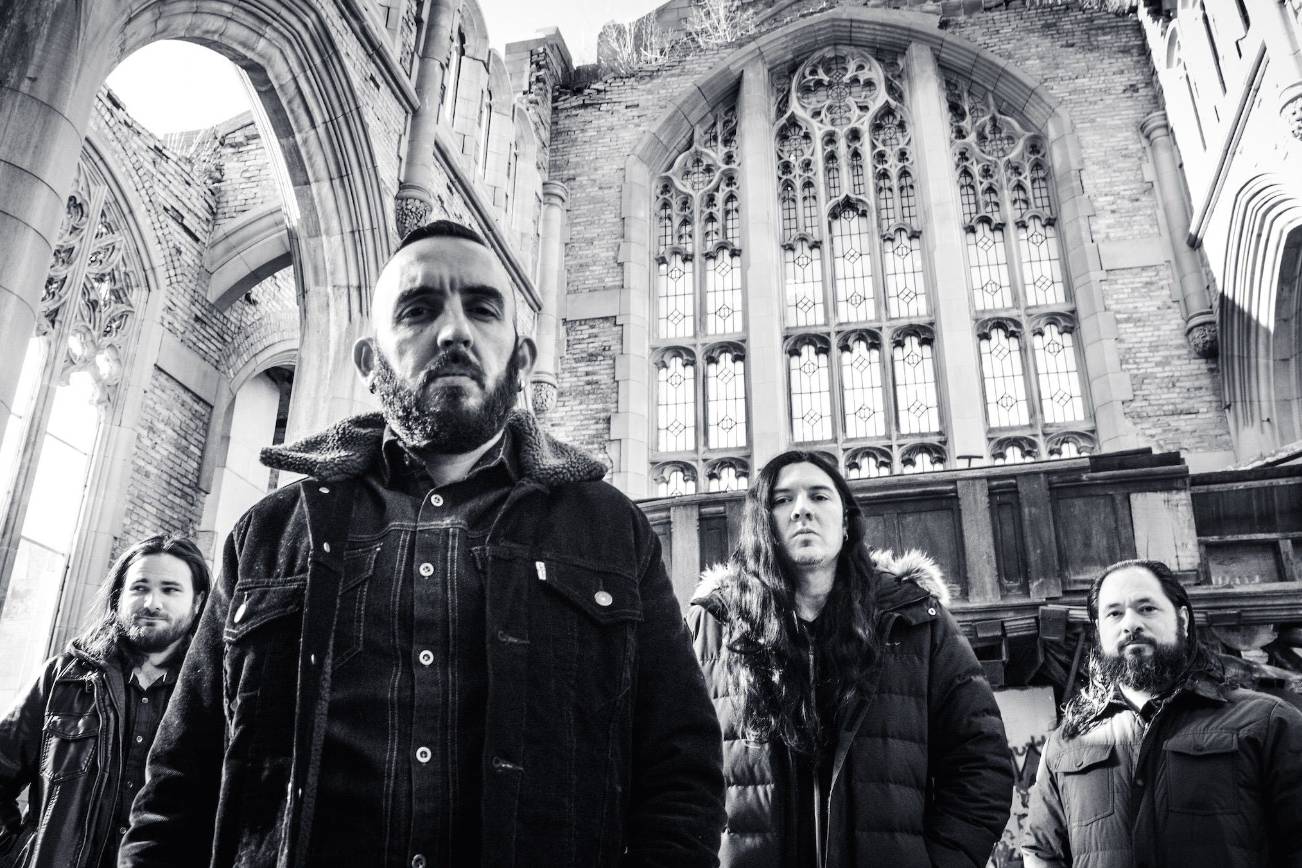
Chicago’s Varaha is a relatively new prospect on the metal scene and one that blows all boundaries and preconceptions about what a metal band can be. Their debut full-length, A Passage for Lost Years, is… well, put it this way: while Varaha may be checked off as a member of the doom metal scene, it is massively more than that.
Guitarist/vocalist/composer Fabio Brienza answered our questions with the same expansive depth as he writes music, so allow me to step aside so you can watch what happens when you give him free reign to express himself. You can purchase their album, which was released on April 26th, via Bandcamp or Prosthetic Records, not to mention find it on most major digital streaming services.
Can you give a brief history of the band? What were you looking to do with Varaha that you hadn’t had the opportunity to explore in previous bands?
Fabio Brienza: On October 14th, 2012 (guitarist) Joel Hollis and I met and found out that we shared many similar musical sensibilities. We started collaborating on new tunes as well as re-arranging together some of our old compositions. Shortly afterward, (drummer) Dave Swanson joined us, followed by (bassist) Bryan Gold. We started playing shows in Chicago and tracking our self-titled EP. We released the EP independently in 2017 and it received a great response. We were approached by Prosthetic Records and here we are now, (releasing) our debut album A Passage for Lost Years.
Compared to some of my past musical endeavors, with Varaha I simply wanted to have the freedom to practically do whatever I wanted, the freedom to use whichever tool was at my disposal in order to achieve my vision, whether that’d be a wall of distortion, a classical instrument, harsh vocals, manipulated sounds, a Theremin, chants, double bass, you name it. I simply didn’t want to adhere to any specific canonic genre limitations.
Coming from filmmaking, storytelling has always had a strong influence in my musical composition process, so when I write music I treat each song as if I was writing a screenplay. I ask myself, “What am I trying to say? What does this moment sound like? And then, if this happens, which instrument or sound could amplify, compliment, and supplement this shift in moods?” Because of filmmaking, I also learned that creativity is the consequence of necessity and limitations, so I simply looked around me and reached out to my peers in Chicago, learning from them and being inspired by them and by the city’s extremely diverse music community.
Become immersed in the music video for the title track to Varaha’s new album A Passage For Lost Years.
According to Metal Archives, David [Swanson – Drums] has a variety of metal band experience. How does having this experience from across the spectrum of extreme music work for Varaha? Do any of you find yourselves having to get into a particular mindset when writing or performing under the Varaha name?
Brienza: David, being so active within the music world, has definitively been an enriching, invigorating, and empowering asset. Personally, I like playing music at a slower BPM, but David reminds us always that sometimes we should keep the energy levels up and counterbalances our slower and atmospheric parts. It’s a dance. Ultimately, we are all very different individuals, yet we always feed off each other.
Every member has their strengths. We butt heads sometimes, but in the end, we all share the same goal. Like in every field, it’s always healthy to have this kind of checks and balances philosophy; it keeps us focused and objective. Varaha is not a solo project, but rather the fruit of the collaborations between every member of the team. Our diversity is our strength.
In regards to writing, we have a “be who you are/come as you are/what (crazy) new idea can you bring to the table and how can we add to it” kind of mindset. When Joel or I bring up a melody line or a new motif, we still collectively rearrange it together, David adds his potent beats, Bryan adds his voice and the music takes a brand new life and form.
As far as the live component, I have a lot of respect for performance arts and I dress accordingly. It’s almost like a theater play: the lights go on, the actors put on the mask and the magic happens. Also, and maybe this is the Italian in me, I think that if something is important to you, then maybe you ought to dress up. It’s a matter of respect, respecting the performance and respecting the audience as well.
On that note, what’s the story behind the name Varaha? What is the meaning of it and how did it speak to you to the point you wanted to use it to represent your band and art?
Brienza: Naming a band these days is quite hard. A lot of the good names have already been taken, so I decided to look away from Western culture and the Indian name “Varaha” came up. Varaha is the avatar of Indian god Vishnu in boar form who lifts the Earth from underneath the ocean. It is a depiction of strength, a depiction of rebirth through struggle, a depiction of free will.
Interestingly, phonetically, “Varaha” is also very similar to the word “Baraja” which is Spanish for “deck of cards”/“the cards that you’re dealt with in life” which to me stands for “leaving life in the hands of fate,” a depiction of predestination. With its dual meaning, Varaha represents the ambivalence within me, a portal of both my strengths as well as of my uncertainties, my daily questioning, and my daily inventiveness.
One stream of this single and you’ll be near both “Climax & Exile.”
How long did it take to write A Passage for Lost Years? What kick-started the process and what is that process like?
Brienza: Aside from “Climax & Exile,” which Joel and I wrote in 2014, and was initially meant to appear on our debut EP, everything else was written simultaneously between 2016 and 2017. Signing with Prosthetic Records gave us a deadline and incentive which we needed in order to get every song of the LP written, arranged, and finalized in a timely manner. In the end, nothing will ever be perfect; you just need to get it done.
As far as our motivations, that’s a tough one to answer. I believe we create because we have a need to… we need it to survive. Sometimes, it’s the only way out. By all means, I am not trying to avoid the question, I simply feel that we all have our personal stories which inspire us to do what we do; some stories are out in the open, while others will stay unheard, buried deep within each one of us. Ultimately, we simply hope that the audience will approach our music with an open mind and find a narrative of their own.
In regards to songwriting, as mentioned before, every member is involved in the creative writing process. I treat music the same way I treat writing a screenplay. Sometimes I provide a thoroughly thought-out song structure, sometimes I start with the song title before the song is even written. It all starts with one idea. Together, we dissect, expand on, analyze and deconstruct each idea. We went as far as playing some stuff backward to see what it would sound like. After we implement everyone’s views and sensibility and after much trial and error we collectively end up agreeing to a new final form.
Were the orchestral parts written before, after or in direct conjunction with the metallic material on the album?
Brienza: The orchestral parts were written in direct conjunction with the metal tracks. They are closely related and they are all inspired by one another. “Disbelief” is directly interconnected with “Refrained” and “At That Instant” is closely connected to the title track. You can actually hear the first motif of “At that Instant” at the ending of “Passage.”
Check out the artwork for A Passage for Lost Years, which was released April 26th via Prosthetic Records.
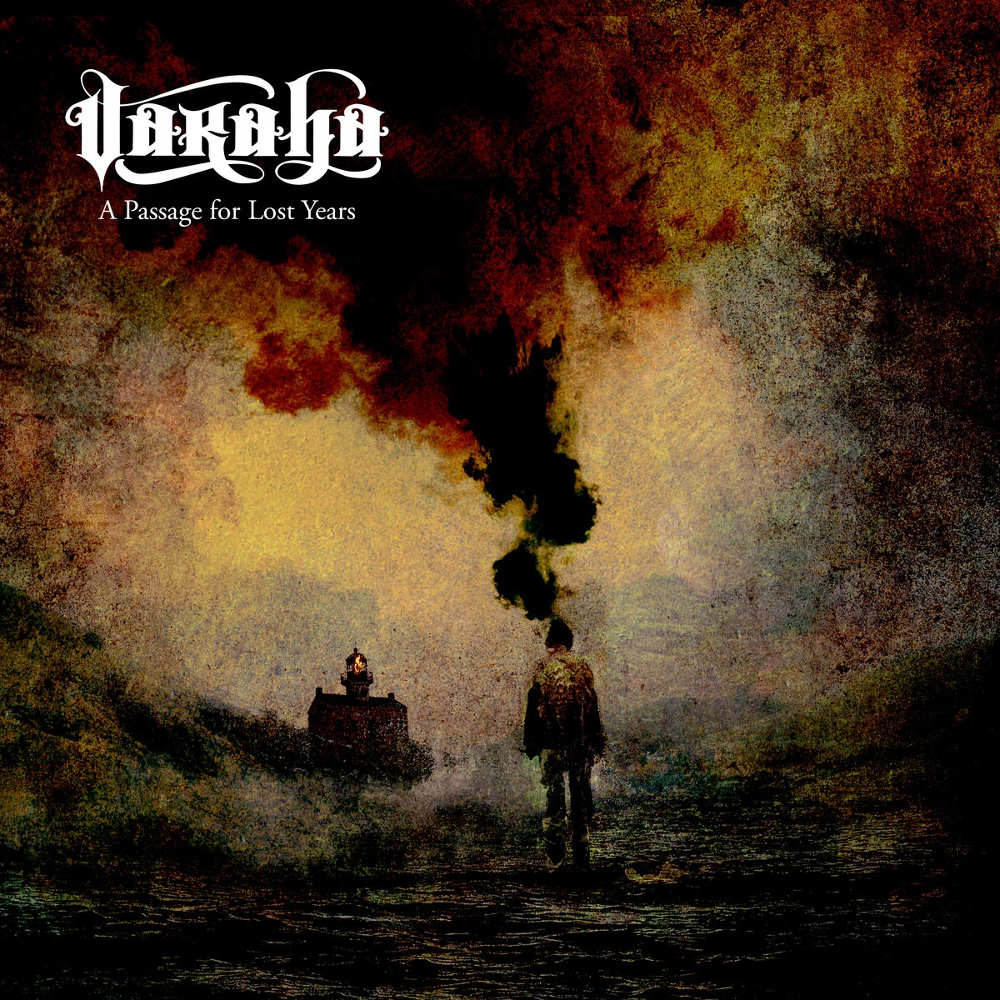
If I’m not mistaken, this was your first time in a studio to do a full-length as Varaha, but not as individuals. Was there anything done differently in terms of the way the album was recorded that was different when compared to how you had done things in the past?
Brienza: First and foremost, due to the complexity of the record and all the guests involved, pre-production was (an) absolute key to success. We spent a lot of time mapping out everything. We also used one producer, three studios and three sound engineers, so all parties had to be in sync with everything. Moreover, before we even entered the studios, we demoed each song six times at different BPMs to find out which BPM felt more natural.
I also spent a couple of months mapping out the orchestral arrangements together with William Aldridge at Third City Sound Studios, finalizing all the music sheets, rehearsing, as well as creating MIDI reference files in order to get a rough idea of what the final product would sound like before the orchestra went into the studio.
What is the significance or story behind the album’s title and how does the artwork play into that? Did you have to go back and forth very much with (artist) Travis Smith on the cover?
Brienza: Every song and every piece of art out there means something completely different, or nothing at all, depending on what’s going on in the beholder’s personal life. Some people may be bored by our music, while others may see themselves in it. For the latter, hopefully our music will be their soundtrack when they’re going through dark times and hopefully it will give them some relief. Many folks praise the darkness like it’s something cool, while others cry from the darkness because they’re trying to get out; it’s a plea for help.
In the end, we want listeners from all walks of life and lifestyles to be able to get something out of our music and lyrics, but whatever that is, that’s up to them to decide. As far as the cover art, Travis Smith is one of the most open-minded, patient and collaboration-focused persons I have ever met. You would think that an artist of his caliber would simply say, “I got this. I’ll give you a finished product in a few months!” That was not the case.
Instead, Travis was extremely inclusive and embracing of my art direction and all my bandmates’ ideas. He and I had extensive discussions about themes and concept, hundreds of back and forth brainstorming emails discussing subject matter, color temperature, setting, color palette and so on. We tried some ideas; some worked, some didn’t, some became something new, others were enhanced by my bandmates’ feedback. We all worked together until the cover art found its own new life.
Have you taken “The Midnight Oath” as of yet? If not, here’s your chance.
Tell us about the numerous guest appearances and how they all came to be?
Brienza: The orchestral overtures within A Passage for Lost Years feature guest appearances by Chuck Bontrager (Concertmaster for the Chicago production of ‘Hamilton: An American Musical’), Nora Barton (Mucca Pazza, Mono) on cello, Nick Broste (Mono, Wilco) on trombone, Bruce Lamont (Yakuza, Brain Tentacles) on saxophone, Nicholas Dellacroce (Bongripper) on synth/sampling, Ali Hunger (Velcro Lewis) on Theremin, Monica Benson (Bugler at Arlington International Racecourse) on trumpet, as well as Kristina Lee and other members of The Oak Park & River Forest Symphony Orchestra.
I was born in Rome and I grew up listening to Ennio Morricone’s music as well as a lot of classical music. Even after I discovered metal, one of my biggest dreams was to hear “my metal” being performed by classical instruments. Fast forward 30 years and Varaha came to be. I was a different person, still very flawed, yet a tiny bit more confident. So, right before entering the studio for our debut EP, I told my bandmates, “I want some of my orchestral stuff in here. Maybe I could try and write a piece for cello and keep it simple and maybe I can ask Bruce Lamont to add some sax!”
So, I simply sent out a few text messages and “La Mela” came to be. A year after the EP release, Empire Productions (Chicago) needed an opener for Xasthur’s acoustic set and reached out to me asking if I wanted to play the show and perform some of my solo soundtrack stuff similar to “La Mela.” I blindly said yes, thinking I had plenty of time to prepare, not realizing that I barely had a month to get together an orchestral ensemble. But on that day, I finally got that “motivational deadline” which I needed in order to get my orchestral endeavors started.
That was my kick in the ass to get it done. Just like I did with “La Mela,” I simply reached out to my peers; I messaged (sound engineers) Mike Lust, Greg Norman, Nick Broste and also Bruce Lamont asking for help and references. In the end, I did gather a small chamber orchestra ensemble to perform with me and I am still amazed I pulled it off. When we signed with Prosthetic, I told myself, “That’s it, go big!” and decided to put all my cards on the table and do extensive orchestral work for the Varaha LP. I dream of scoring soundtracks for films one day and hopefully A Passage for Lost Years will be my introduction to that world.
Regardless, I challenged myself to make it happen and I am very grateful to my peers and the Chicago community were very excited to help and support me in achieving my vision. I received a lot of guidance from William Aldridge (who has been my co-captain ever since), as well as from Kristina Lee from the orchestra who has also been helping me gather other like-minded musicians and coaching me as well. So, when someone asks me how did that came to be, all I can say is that I took that first step, rolled the dice and hoped for the best.
This is more or less where things got started… stream the three-track Varaha EP:
Being that A Passage for Lost Years is your debut, was there any point you thought about shucking all the guests and keeping the first album a band-only affair?
Brienza: Nope. One day I woke up and told my bandmates, “That’s it! I am going to get a full orchestra for this record. Please let me try and do this and give me this chance.” That was my personal musical challenge and everyone in Varaha was very excited to see if I could pull it off. I locked myself at home for a few months writing music, I did a lot of homework, I surrounded myself by amazing and inspiring people and I worked very hard to make it happen.
The orchestral recording sessions went without a single glitch. Moreover, Prosthetic Records gave me this opportunity and this platform and I wanted to make good use of it. Prosthetic gave me the freedom to do whatever I wanted and the motivation to get it done. I wanted to prove them right. This record felt like an awakening to me, a second chance at life, so I went all-in and took that leap!
How and when did Prosthetic come into the picture?
Brienza: After our EP came out, Steve Joh (Prosthetic A&R) got a hold of a copy. He contacted us, came to Chicago to meet with me during Reggie’s Rock Club 10th Anniversary Party and him and I connected immediately. Steve is one of the most humble, inspiring, open-minded and supportive people that I have ever met. He’s been guiding us through this journey, helping us overcome the challenges and always pushing us to be at our best.
How would you characterize A Passage for Lost Years? I’ve already seen multiple references and mentions to doom metal, which I hear very little of myself. Are you for or against such easy-way-out labeling and how do you feel about the inevitable codification that comes with being at that stage of the business where, ultimately, everyone just wants to move units?
Brienza: Here’s the thing; as we discussed before, I am also against labeling. I also understand that it may be a little hard to categorize our music, but in the very end we are a metal band and the metal world is our community. Metal is not about the genre, but about the community around it, the people, the venues, the promoters, the concert goers, the friends, the business owners… the music is almost secondary. It’s a very diverse world and in the end, we only have each other and that’s what matters to me the most.
Nowadays, many very disparate bands fall within the “doom metal” umbrella and we cherish that the doom sub-genre is so diverse. Some of these doom bands (new and old) are dark, have orchestrations and are best listened to at home, alone, behind closed doors. Others are meant to be heard live, with walls of distorted sound, harsh vocals while being surrounded by other people. I simply hope that within the doom realm we may pursue and maintain our creative freedom and hopefully for some folks to understand what we’re trying to convey and to make it their own.
Watch a live version of “Refrained” performed a couple of years ago at Reggies Rock Club in Chicago.
What’s the most surprising thing about life in a band signed to one of underground metal’s most recognizable names? Anything happen yet that you weren’t prepared for?
Brienza: First and foremost, Prosthetic’s support system is truly amazing. We now have a team of folks that we look up to and that we can count on to help us achieve many of our goals. It’s been a little weird to see how fast things have been moving and having very strict hard deadlines. So, it’s technically both “surprises” as well as “new challenges,” but in the end, we are very grateful to have this kind of support from the label. Personally, I would have never expected to be able to collaborate with Travis Smith, he designed the artwork to some of my favorite records and I have respected him and loved his work ever since I was a teenager. It was a weird feeling when Prosthetic Records helped us make this connection a reality.
Do you have a touring/live show plan on the table once the album is out? How does Varaha differ live from recording?
Brienza: We booked a seven day pre-release Midwest tour covering some of the main cities in the Midwest. We still don’t have an actual LP tour lined up. Hopefully, we will hit the road again this summer if the right opportunity and booking agent comes to the picture or if another band wants to add us to their tour package. Time will tell and we are open to ideas. As far as concerts, while our recordings are darker, atmospheric and slower-paced, in a live setting it’s a whole different story. We crank up the gears and bump up the BPM. In a live setting, we want fire and energy. We are a metal band.
Eventually, we would love to bring the full orchestra in a live setting and many of the classical musicians are interested. I can only hope for a one-time full orchestra show at Thalia Hall or The Metro in Chicago one day and one day I would love for the orchestra to play the whole album without us because that’s how I imagine my music sounding in my head. I am grateful that through the recordings within A Passage for Lost Years I was finally able to make this a reality.
-

 Music6 days ago
Music6 days agoTake That (w/ Olly Murs) Kick Off Four-Night Leeds Stint with Hit-Laden Spectacular [Photos]
-

 Alternative/Rock16 hours ago
Alternative/Rock16 hours agoThe V13 Fix #011 w/ Microwave, Full Of Hell, Cold Years and more
-

 Alternative/Rock1 week ago
Alternative/Rock1 week agoThe V13 Fix #010 w/ High on Fire, NOFX, My Dying Bride and more
-

 Features6 days ago
Features6 days agoTour Diary: Gen & The Degenerates Party Their Way Across America
-

 Culture1 week ago
Culture1 week agoDan Carter & George Miller Chat Foodinati Live, Heavy Metal Charities and Pre-Gig Meals
-

 Music1 week ago
Music1 week agoReclusive Producer Stumbleine Premieres Beat-Driven New Single “Cinderhaze”
-
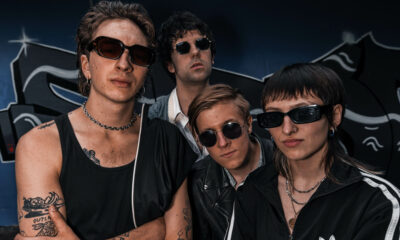
 Indie16 hours ago
Indie16 hours agoDeadset Premiere Music Video for Addiction-Inspired “Heavy Eyes” Single
-

 Alternative/Rock1 week ago
Alternative/Rock1 week agoThree Lefts and a Right Premiere Their Guitar-Driven Single “Lovulator”

